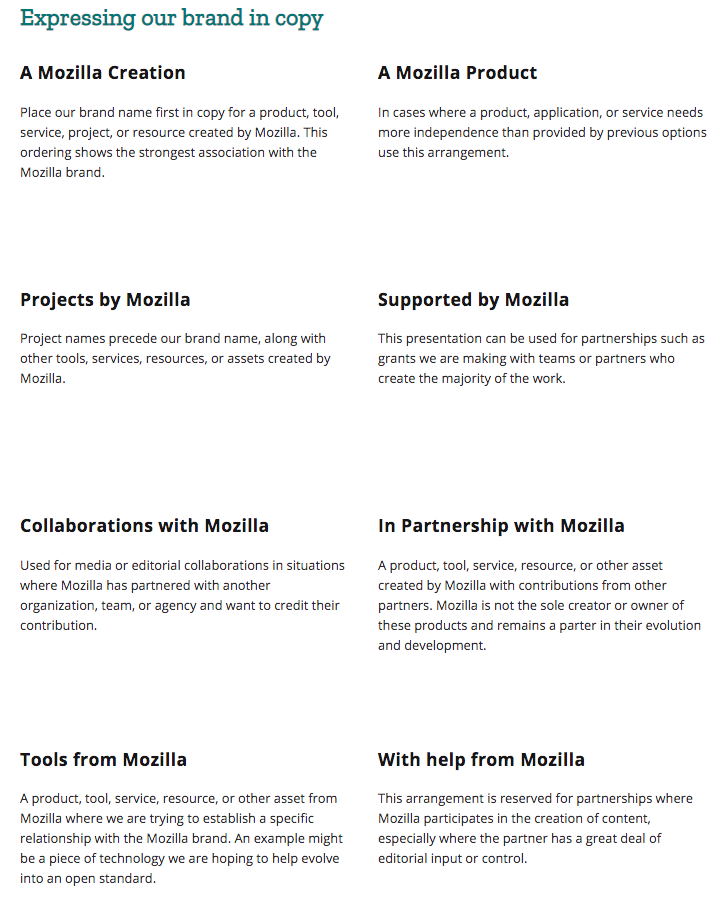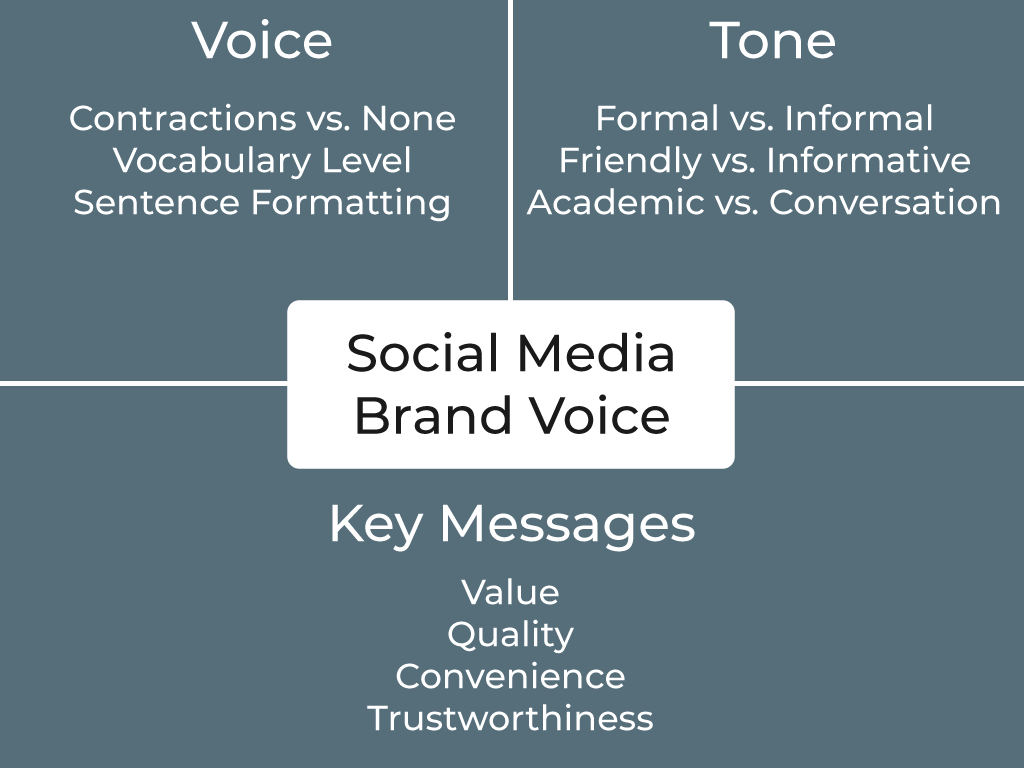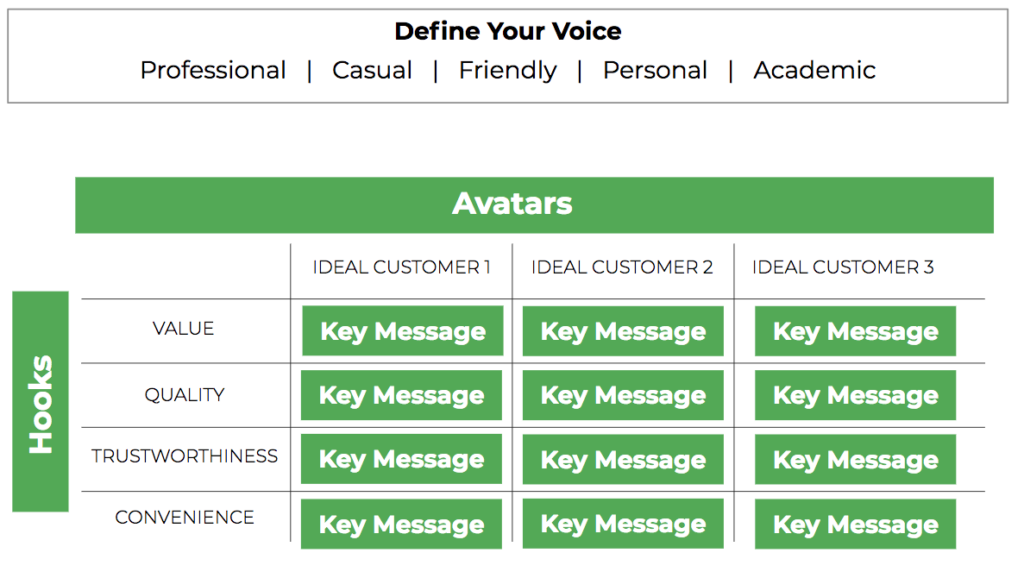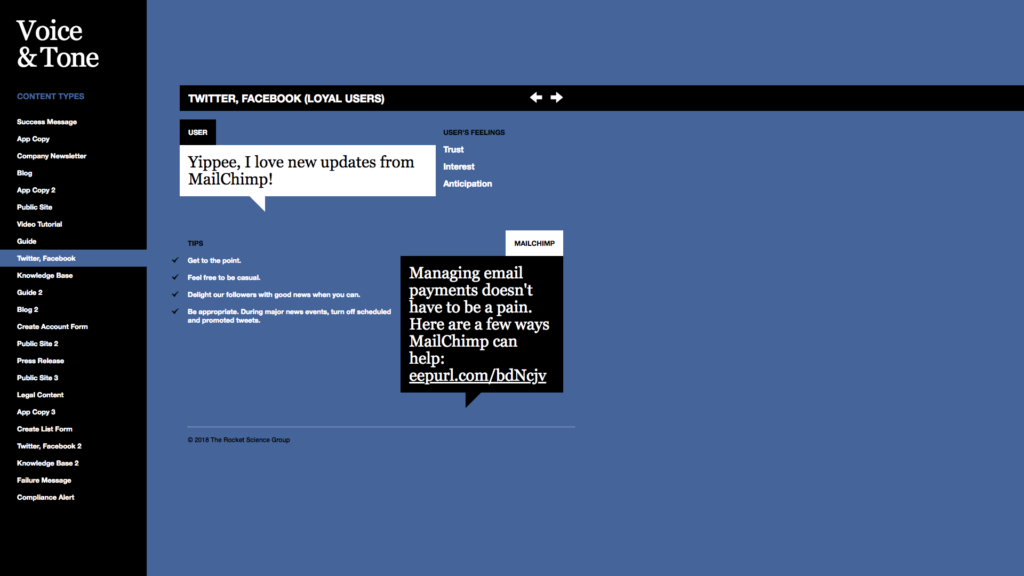Writing for social media doesn’t need to be hard. Think about it strategically and intentionally.
As a nonprofit, it’s important to harness the power of each outlet you have to reach your audience. Social media is a conversational tool to engage with potential donors and volunteers. Each platform is unique in its format, tone, and how you engage with your audience, but your overall brand and message should never change.
Collaborate with your team to develop a strategy for writing online so that anyone can craft your social messages with consistency in a uniform voice.
Develop Your Voice and Tone
Before you begin writing on any digital channel, including your website, you should define your voice and tone. Write it out and develop a few key messages, or sales hooks, that you want to convey about your brand, services, and cause. CoSchedule has a useful resource to help you with this process.
Voice essentially describes the patterns of speech you want to use, which words you want to use, and how you want to use them. In most cases, using active language is best practice when defining your voice. Consider what kind of language to use. What level of vocabulary is best for your audience? When you develop your brand guide, include how you will use vocabulary and grammatical structure.
For example, at Give we use verbiage found in the nonprofit sector, such as organization, membership dues, or charitable donation. Give also uses contractions, but sparingly to keep a more professional, yet approachable writing style.

Your tone, on the other hand, is the attitude and personality that you convey to your audience. It gives them the sense of “who” your organization is behind the logo. The tone you choose to use online reflects your organizational culture, your values, and your identity.
There are a variety of tones to choose from and you might choose to use a combination of different tones for your organization based on the platform or situation. Some examples of tone include:
- Professional and Approachable
- Knowledgeable and Wise
- Casual and Friendly
- Witty and Sarcastic
- Serious and Straightforward
- Passionate and Excited
- Informative and Conversational
- Inquisitive and Curious
- Academic and Sociable

Get to Know Your Audience
How you want to appear to your audience depends just as much on their point of view as it does on what you write, do, or say. Knowing your audience allows you to develop empathy and better communicate in a way that they are receptive to.
Brainstorm with your team about who your donor base is or will be. Who do you think your cause speaks to and why? If you have already established your online presence you can also use your Google Analytics, Facebook Insights, Twitter Analytics, and email list statistics to concretely define who your audience is.
Write down who your cause will resonate with and why, then develop a hierarchy. Your primary audience consists of who you want to speak to the most. Your secondary and tertiary audiences are also important, but they should get less of an emphasis in your online messaging.
Once you’ve created those definitions of your audience, break it down even further with personas. Give each audience a fictitious “profile.”
- Who are each of these people? Give them names.
- What are their interests? Use the categories defined by ad tools, like the interests in Facebook audience targeting.
- What about your cause will this person like the most? Choose from your key messages which will best grab this person’s attention.
- Will the persona respond more to emotional messages or factual and logical reasoning? Write the voice and tone of the messaging targeted at each target audience individually.

Tactics for Writing for Social Media
Writing for social media requires slightly different tactics on each platform. Instagram is different from Twitter, and both are drastically different from Facebook. So how do you write for social media?
Generally speaking, keep the content on your social posts concise and conversational while maintaining everything you just defined above. On social media, brevity is much more successful than a long-winded post.
Depending on the tone you choose to use, contractions and emojis are also thing to consider on social media. If you write too formally, it’s likely that your follower count will fail to increase much. Contractions are generally used by all brands on social media. However, it’s important to define the line between your organization’s brand and the use of informal language.
Emojis are an example of a grey area when it comes to writing for social media. They aren’t always appropriate, but even for some of the most serious brands they can be useful. If you need help determining when to use emojis, here are some useful tips.

Each platform has its own nuances for writing engaging post content, outlined further below.
Writing for Facebook
People on Facebook like to engage and interact. They like to click on articles and share them with their audience as well. You can leverage this environment by doing the following:
- Use Action-Oriented Terms
- Post Something Shareable
- Be Concise
- Be Conversational
- Use Occasional Emojis
- Post Native Video Content
Writing for Twitter
Twitter is a conversational platform. Users of Twitter like to interact with each other in near real-time and engage with content that’s more easily digestible in a short amount of time. Find success on Twitter with the following in mind:
- Stay Under 280 Characters
- Be Conversational and Friendly
- Use #Hashtags
- Get Others Involved with @Mentions
- Use Occasional Emojis
- Post Native Video Content
Writing for LinkedIn
LinkedIn is a little more formal than Twitter and Facebook. It also supports longer content in an article format. Users of LinkedIn are focused on career and leadership oriented content. Keep these points in mind when writing for LinkedIn:
- Post Something Shareable
- Be Concise
- Be Professional
- Ask Questions
- Stay Away From Emojis
Writing for Instagram
Instagram is mainly for visual content, but the copy you choose to support it is key. This platform is all about storytelling. People want to get context for your photo or video. Write on Instagram with the following tactics:
- Keep it Short
- Give Context
- Use #Hashtags
- Tag People with @Mentions
- Use Emojis
Writing for Pinterest
Pinterest is a place where people go to gather ideas, like wedding themes and DIY projects, as well as things they like to look at, like animals or tattoos. People on this platform want to know what it is that they are looking at before they click into it with a strong headline. Use these methods for a successful Pinterest strategy:
- Use a Headline
- Include a Call to Action
- Keep it Short
- Be Friendly
- Be Descriptive
Follow Up With Engagement
Posting social content and ignoring anyone who interacts with it would result in your hard work going to waste. Social media is conversational so part of your content writing includes responding to and engaging with your audience.
Be sure that in your replies and responses you are adhering to your voice and tone, staying positive and neither too brief nor too wordy. The trick to writing for social media is finding the right balance.
The Copywriting Cheat Sheet
In case you need a reminder, here is a large cheat sheet for copywriting on each platform, including email marketing and your website.



